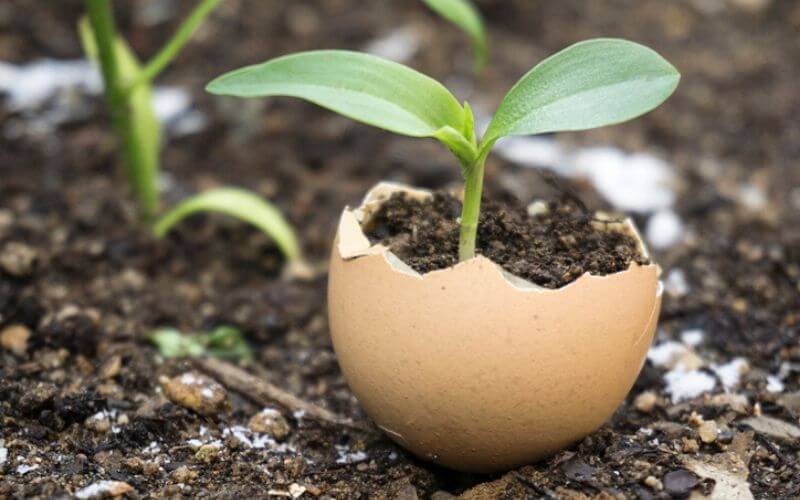
Eggshells might seem like a one-time item. After you make breakfast, you toss the eggshells into your compost – never the trash can! What you might not know is that you can use eggshells in the garden in a multitude of ways.
They might be small, but eggshells are mighty, containing 95% calcium carbonate, which makes them similar to our bones and teeth. Not only are eggshells edible – even though they might not taste good -, but they’re also great for the plants growing in your garden.
The problem is that you might find a lot of misinformation out there about uses for eggshells that don’t work.
While repurposing eggshells isn’t a myth, some of the ways that other articles might tell you to use them are a bit of a stretch.
So, along with discussing the multitude of ways that you can use eggshells in your garden and throughout your home, we also are going to show you which of these ways might be exaggerated a bit.
You don’t want to waste your time on these myths if they won’t really help!
How to Prepare Eggshells for Reuse
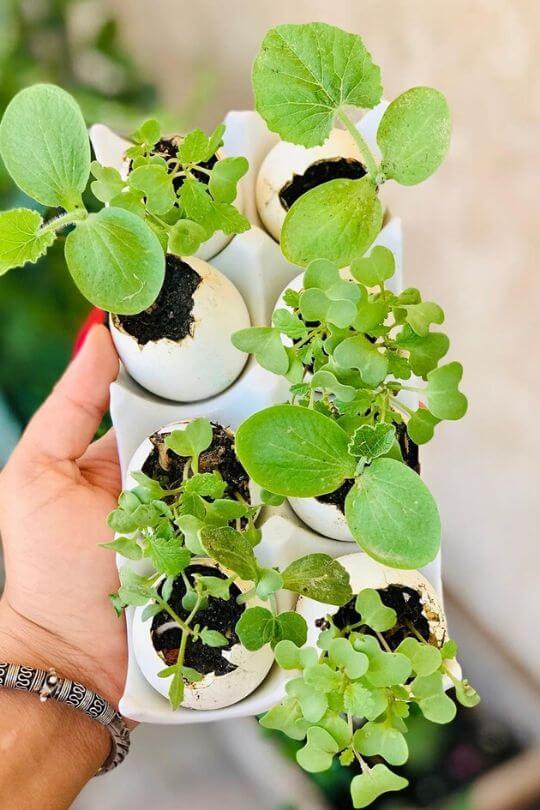
Before we talk about the different ways to reuse eggshells, you need to know how to prepare them. You can’t just use them as-is.
After you use your eggs to make breakfast or bake a cake, rinse the shells off with warm water, making sure to scrub the inside of the shell with your fingers. There is a bit of a membrane that might stick inside of the eggshell unless you remove it.
After washing the eggshells, leave them in a jar or bowl without a lid to let them dry completely. Despite what you might think, cleaned eggshells don’t have any bad scent to them. They won’t stink your kitchen up!
Once they’re thoroughly dried, you can crush the shells into small pieces with a wooden spoon or other tools. Some people use their hands to break the shells, but others use stick blenders, coffee grinders, a full-size blender, a mortar and pestle, or crush them in a plastic bag with a rolling pin.
You don’t always need to crush the eggshells, so make sure you know how you plan to use them before you start breaking.
9 Ways To Use Eggshells In The Garden For Soil, Compost, And As Pest Control
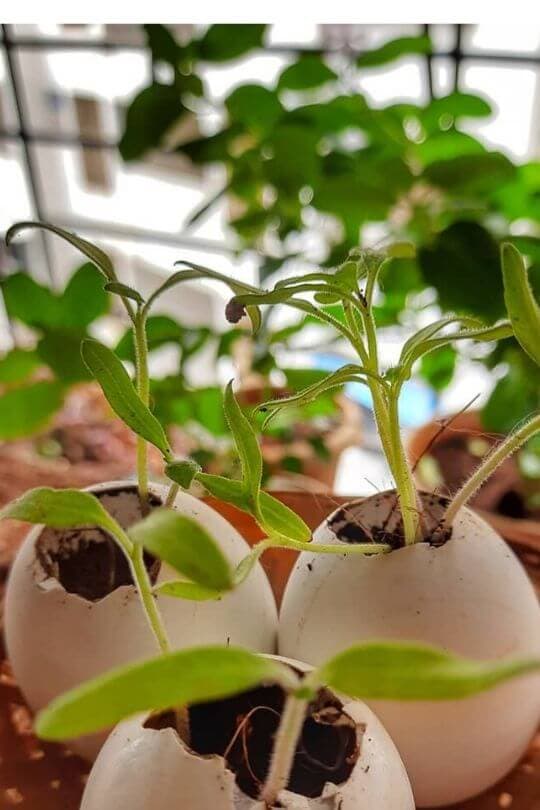
Eggshells can be used in many different ways throughout your garden and home. You might be surprised by how many different things you can do with them.
1. Use As A Garden Fertilizer
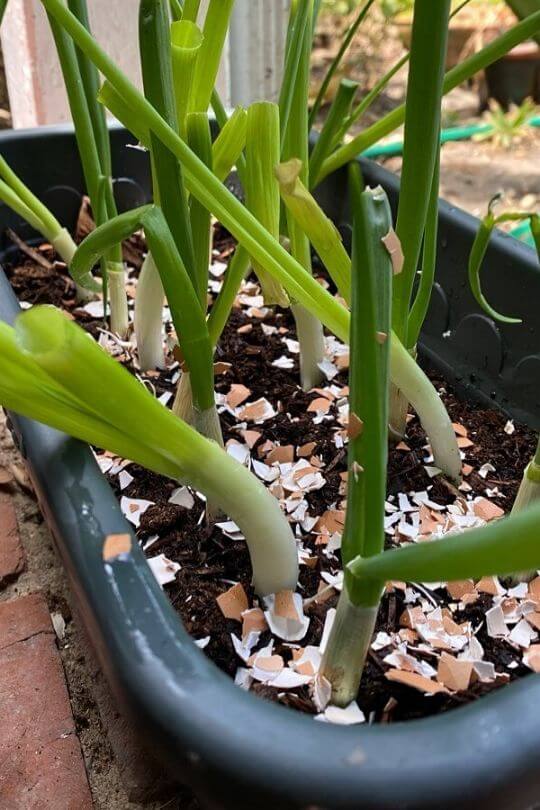
This Use Is Partly A FACT.
As mentioned before, eggshells are mostly calcium carbonate, and calcium is necessary for your garden soil. If you don’t have enough calcium, your soil won’t be able to support plant life and growth. So, when you add crushed eggshells to your garden, you’re contributing large amounts of needed calcium.
How Do You Add Eggshells To The Garden Soil?
You should plan to grind up the eggshells and mix them into the soil. Using a blender is a fantastic idea because it will not only crush the shells but turn them into a powder that is much easier to mix into your garden soil.
It will take several months for the eggshells to break down and be absorbed by the plants.
Since it takes so long for the eggshells to end up working into your soil, it’s best to add large amounts of powdered eggshells to your garden beds in the fall, tilling them up as you prepare your garden for the upcoming winter.
Then add another batch of eggshells to the soil in the spring. By doing that, they’ll add nutrients to your soil as they break down throughout the summer.
Why is calcium so essential? Here are a few ways that your garden soil will benefit from adding eggshells as fertilizer.
2. Start Eggshells To Grow Seedlings Indoors
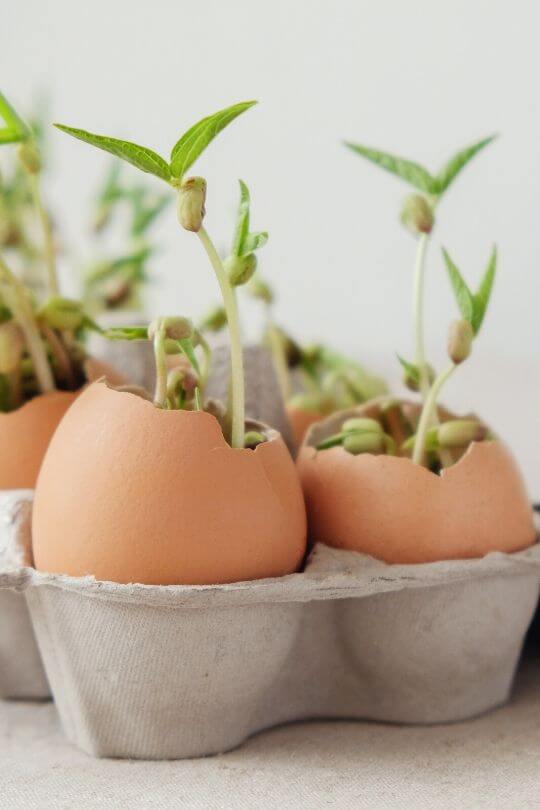
This Use Of Eggshells Is Primarily A MYTH.
That’s right! You probably saw adorable Pinterest articles floating around telling you to save all of your eggshells to start seeds in the spring. Typically, the instructions tell you to use a large half of the eggshell, gently make a hole in the bottom, add soil to the shell, then plant the seeds.
The appeal from this idea is that you can plant the seedlings and shells directly into the soil. It’ll decompose over time.
Will seeds sprout in eggshells? YES, but that doesn’t make them an excellent choice for starting seeds.
Why are eggshells not an ideal choice for seed starting?
3. Give Tomato Plants A Calcium Boost
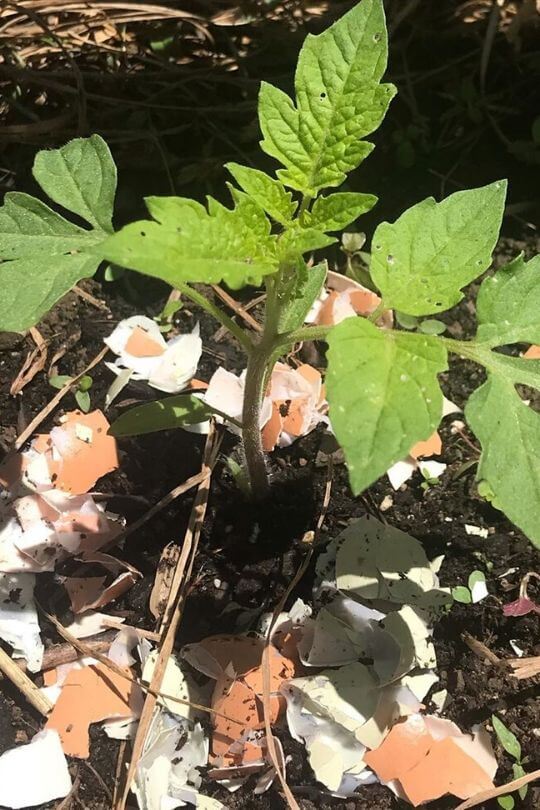
This Use Is Mostly A FACT.
We discussed how important it is to have calcium in your soil, and tomatoes are one of the vegetable plants that need higher amounts of calcium.
You indeed can and should use pulverized eggshells around your tomato plants. It’s best to do so before you plant them.
If you can add the powder to your soil before you plant your tomatoes, that would be ideal because it does need time to break down in the dirt.
One of the best tips for growing tomatoes is to pulverize eggshells and mix them with used coffee grounds. This mixture provides your plants with an instant boost of calcium and nitrogen.
4. Create An Eggshell Mulch
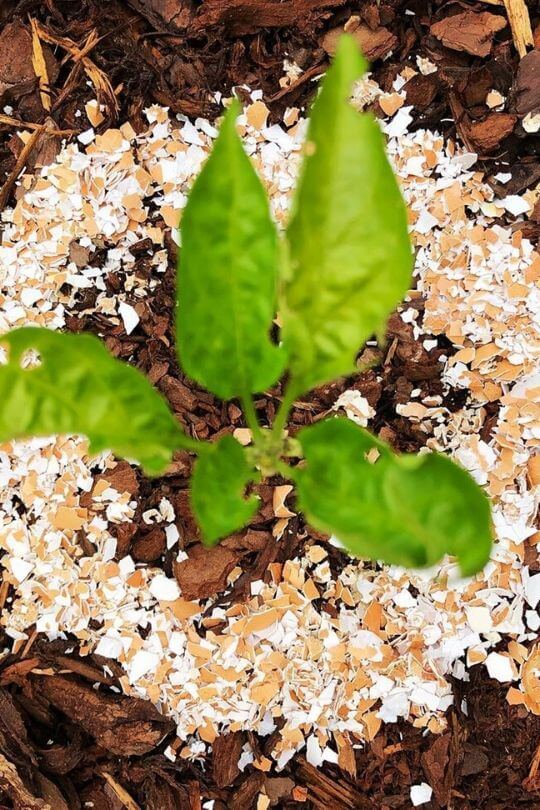
This Use Is Mostly A FACT.
The number of eggs you would need to eat to create a 2-inch layer of mulch over your garden beds would be very high.
If you end up with enough crushed shells, you can use these instead of buying commercial mulch at the store.
Eggshell mulch will act the same as any other mulch. You need to make sure they’re crushed into small pieces but don’t create a powder.
Spread the pieces over the top of your soil. Not only does it work well, but it’s also a unique look for your garden beds.
5. Add Eggshells To Deter Pests
This Use Is Mostly A FACT.
While some studies say that eggshells don’t help deter pests, gardeners swear by this tactic. In some cases, we have to go by what expert gardeners have noted through experience.
Crushed eggshells can be used to get rid of several pests. Here’s how you can use them.
6. Give Your Houseplants A Boost
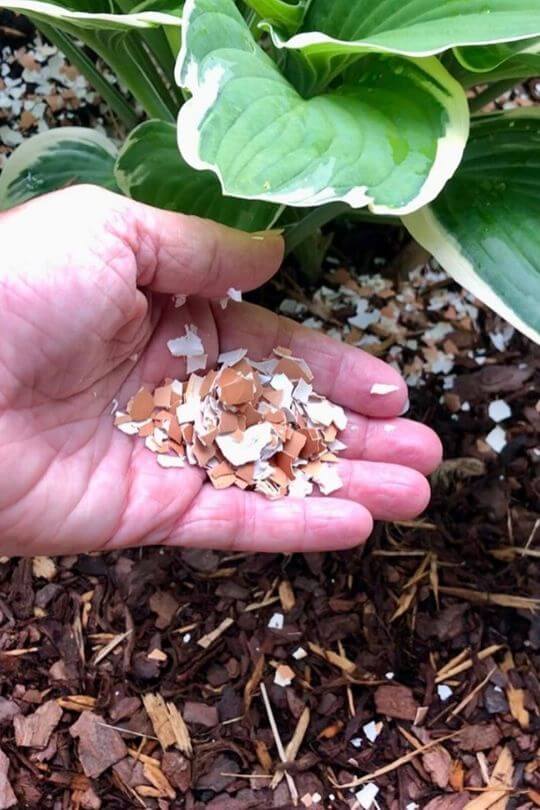
This Use Is Mostly A FACT.
Houseplants can easily fall victim to a lack of nutrients, and eggshells can help give your plants a bit of a boost that they need.
The best way to do this is to wash and clean your eggshells, crush them, and put all of them inside of a jar. Then cover the eggshells with water, letting them soak.
Soaking the eggshells infuse the water with the calcium carbonate, and your indoor plants will love it!
7. Add Eggshells To The Compost Pile
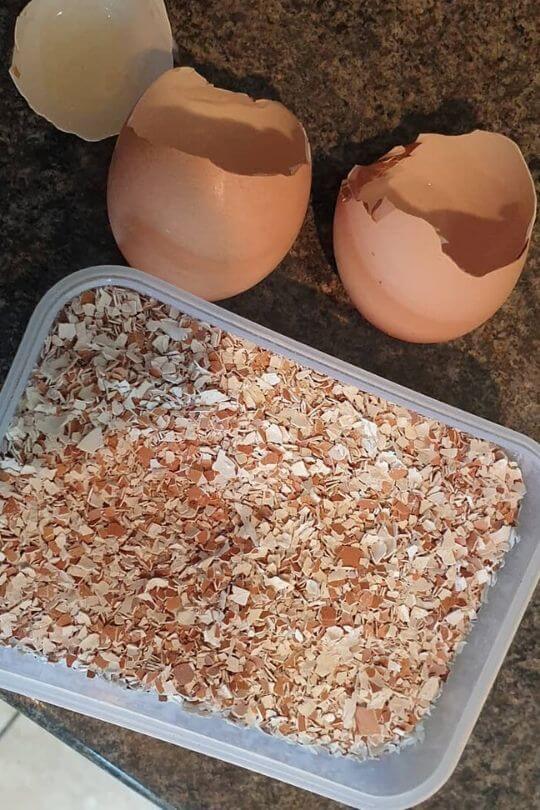
This Use Is Partly A MYTH.
You probably didn’t see this coming, did you? Everyone tells you to add the eggshells to your compost pile, which is correct in some aspects.
Adding the shells to your compost pile adds nutrients that your plants will love when it comes time for the compost to be added to your garden.
The problem with this use is that eggshells take several months to breakdown. It takes time for their calcium and other nutrients to end up in the soil.
That’s true no matter how you add the shells to the compost heap.
Another negative aspect of adding eggshells to the compost pile is that they also have high sodium.
Too much sodium in your body isn’t a good thing; excess sodium can be toxic to your plants. You don’t want to release too much!
Don’t let this discourage you because compost piles take months to break down and reach their full potentiality anyway. I
f you can pay attention, try to avoid putting eggshells into the compost pile a few months before you want to use the finished compost on your garden beds.
8. Add To Your Vermicompost
This Use Is A FACT.
If you have vermicompost rather than a typical compost pile, adding them to the bin is a great idea. Worms love eggshells, especially red wigglers, who adore crushed shells.
The gritty texture of the eggshells helps worms grind up and digest other food bits that they eat as they dig around in the dirt.
Like crops, worms have a crop; they don’t digest food the same way humans do. Eggshells help your worms do their job even better, so toss those in your worm compost bin. It’s worth it.
9. Stop Blossom End Rot
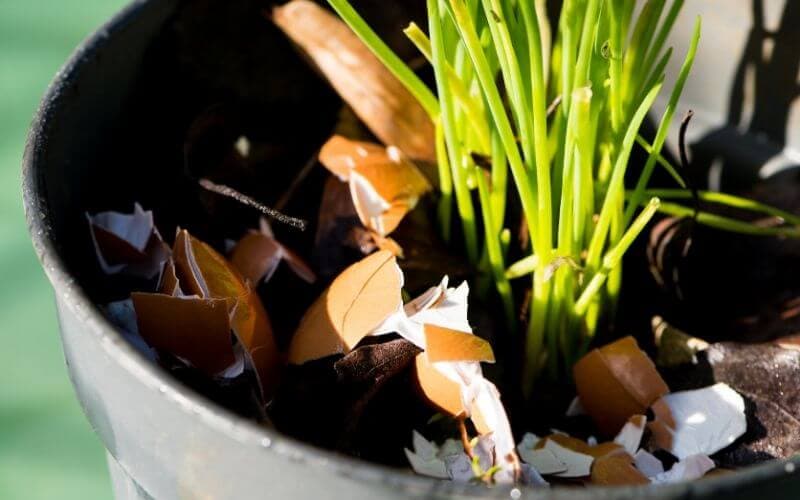
This Use Is A MYTH.
Chances are you’ve seen people discuss using eggshells in the garden to stop blossom end rot.
This takes place commonly in plants such as tomatoes, but using eggshells to prevent blossom end rot is not possible.
Why?
Because blossom end rot takes place even if you have plenty of calcium available in your garden soil.
Instead, irregular watering is the primary cause of blossom end rot. Shells cannot do anything to fix that!
Other Ways to Use Eggshells in Your Home
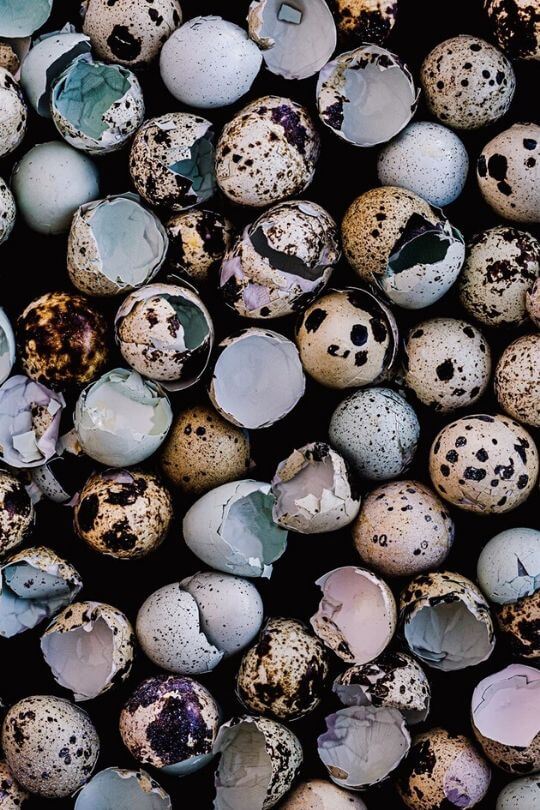
Then, there are other ways to use eggshells that no one has confirmed whether they work or not. No one has studied these uses enough to know if they’re proven to work, but some people swear by them.
Let’s take a look at these uses. You might want to try them.
1. An All-Natural Bandage
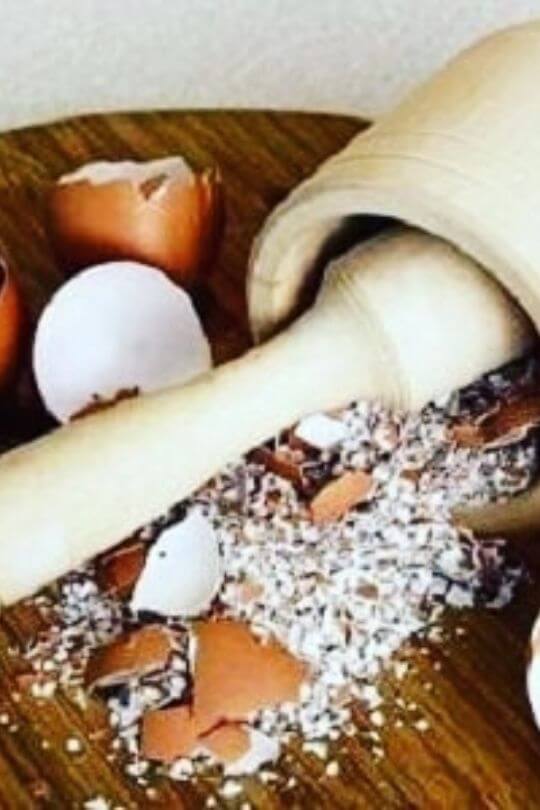
Supposedly, you can use the membrane inside of the shell if you have a cut and no bandages. You can remove the membrane and use it to heal wounds and scratches. It’s an excellent DIY first-aid tool if you have nothing else around.
2. Add To Your Dog Food For A Calcium Boost
You know that you can use eggshells to give your chickens and other birds a calcium boost. The same can be said for dogs! Dogs need plenty of calcium as you do for proper bone growth and health.
3. Household Abrasive Eggshell Cleaner
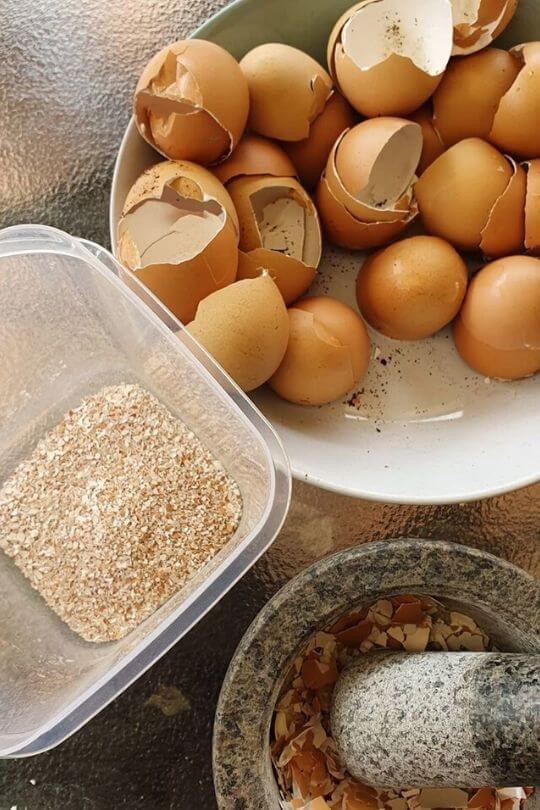
If you want to create a homemade abrasive household cleaner, you can make one with eggshells.
All you need to do is mix ground up eggshells with soapy water -That’s it! You can use this mixture to scrub dirty dishes and get off food stuck on pots and pans.
To make a cleaner, you need about a dozen eggs that are washed and cleaned. Then, they need to be dried and baked in an oven or in the sun for a while to help sterilize them.
After drying, use a mortar and pestle, blender, or grinder to create a powder. A dozen eggs should create a cup of powder.
4. Create A Natural Toothpaste
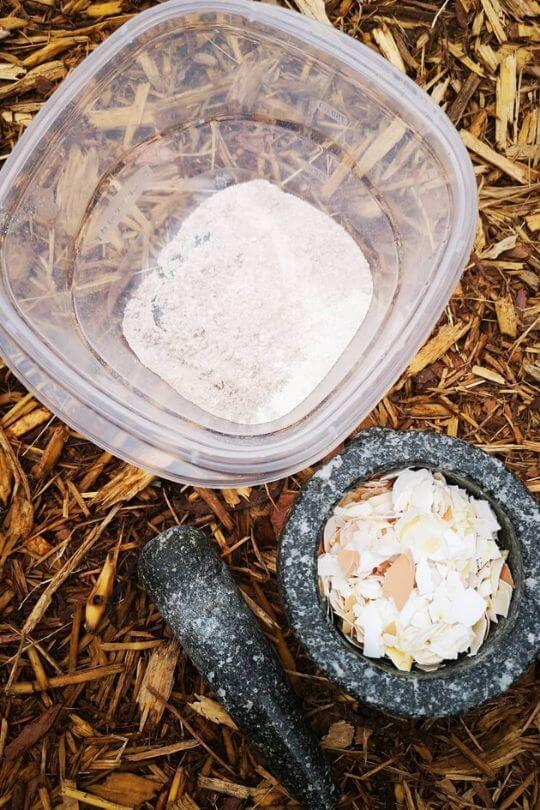
Scrubbing your teeth with powdered eggshells doesn’t sound appealing, but some swear it works and can even remineralize your teeth.
5. Eat Them!
Even though it seems disgusting, you really can eat the eggshells. Since they contain a large amount of calcium, you can toss them into recipes to give you a nutrient boost.
6. Sharpen Blades
Keep some in your freezer, and you can use them to sharpen your blades by adding some water. Just toss it all into your blender and turn it on. Then, you can put that mixture into your compost bin.
7. Homemade Calcium Pills
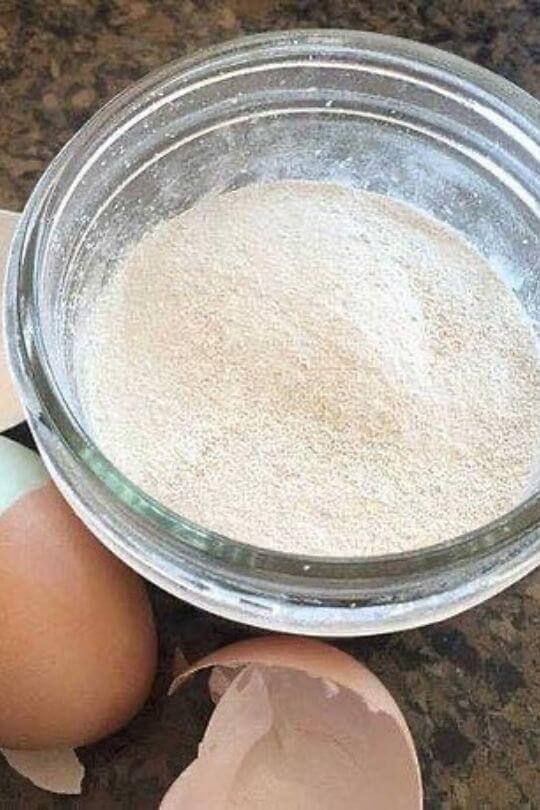
If eggshells can add calcium to your dog’s food and bird food, you can guess that it can help your body.
Make sure to sanitize your eggshells thoroughly before consuming them, and use a blender or grinder to crush them into the finest powder you can create.
You need 00-size gelatin capsules and fill them with the powder for homemade calcium pills.
8. Use Them To Clean The Drains
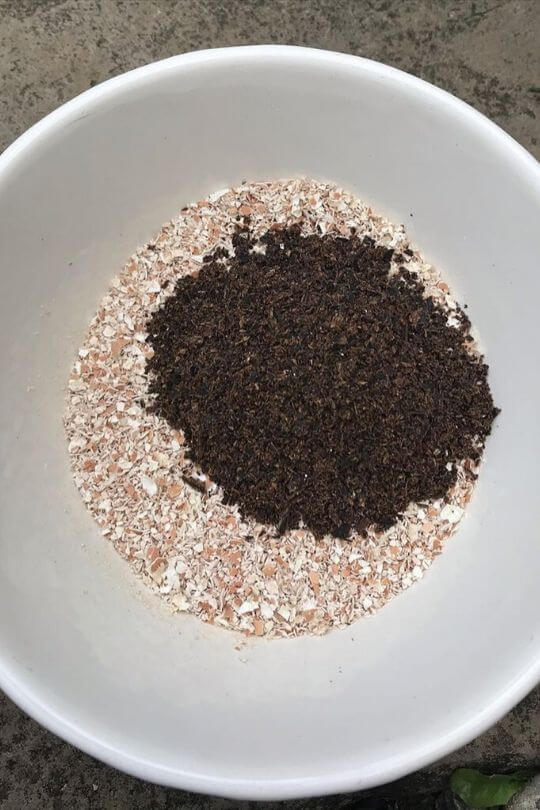
Drains easily get clogged, and you can use eggshells to clean out drains naturally. It’s a great reason to keep eggshells in the kitchen.
Make sure that you crush up the shells. Then, they can go down the drain with your water.
It doesn’t seem like this would work, but it does! The jagged, sharp eggs go down the drain and clear out any clogs in there.
9. Create A Nourishing Face Mask
Blend powdered eggshells and an egg white to create a face mask. This mixture can be used to create a healthy, skin-tightening facial. The face mask does need to dry on your face before rinsing it off.
10. Toss Eggshells In A Pot Of Bone Broth
If you’re making a big pot of bone broth or vegetable stock, tossing in eggshells is a great idea.
Don’t worry; it won’t make your stock taste like eggshells, but it does add small amounts of additional nutrients.
11. Whiten Your Laundry
Some homemakers swear that tossing a handful of crushed eggshells and two slices of lemon in a cheesecloth bag into your washing machine will whiten your clothes. Sounds weird, right? Give it a try!
Find Ways to Use Eggshells
We all love versatile items, and reducing your trash output is essential. Finding different ways to use eggshells in your garden and around your home is one simple step towards a healthier, sustainable lifestyle.
These 17 ideas will get you on your way, but remember, not all uses for eggshells are real!

Written By
Amber Noyes
Amber Noyes was born and raised in a suburban California town, San Mateo. She holds a master’s degree in horticulture from the University of California as well as a BS in Biology from the University of San Francisco. With experience working on an organic farm, water conservation research, farmers’ markets, and plant nursery, she understands what makes plants thrive and how we can better understand the connection between microclimate and plant health. When she’s not on the land, Amber loves informing people of new ideas/things related to gardening, especially organic gardening, houseplants, and growing plants in a small space.
